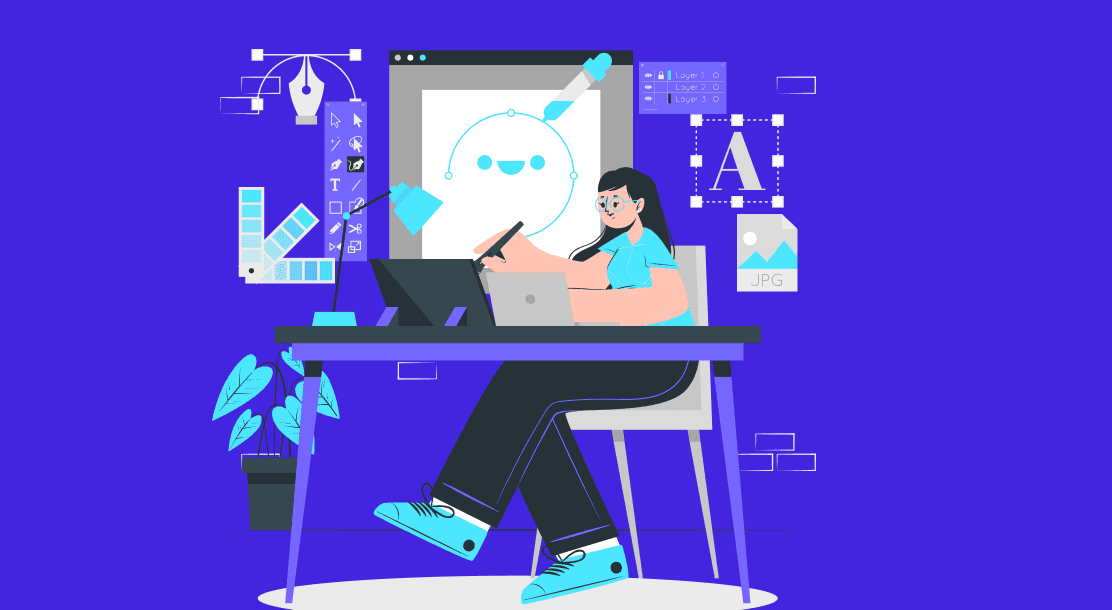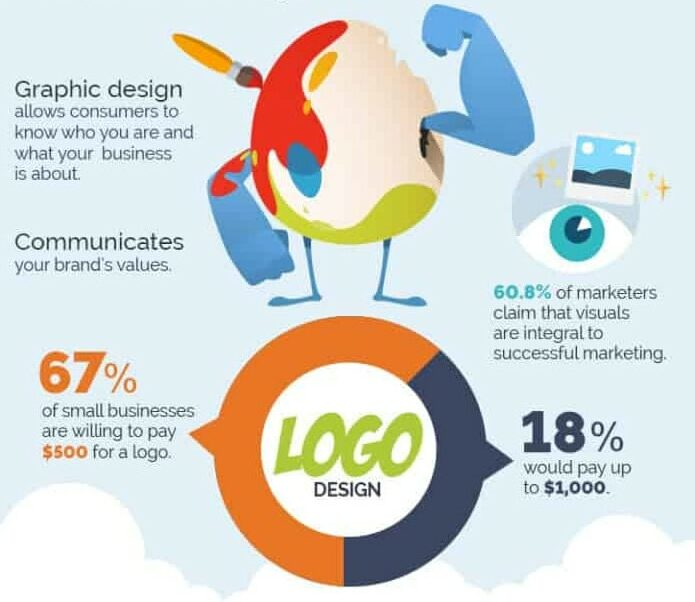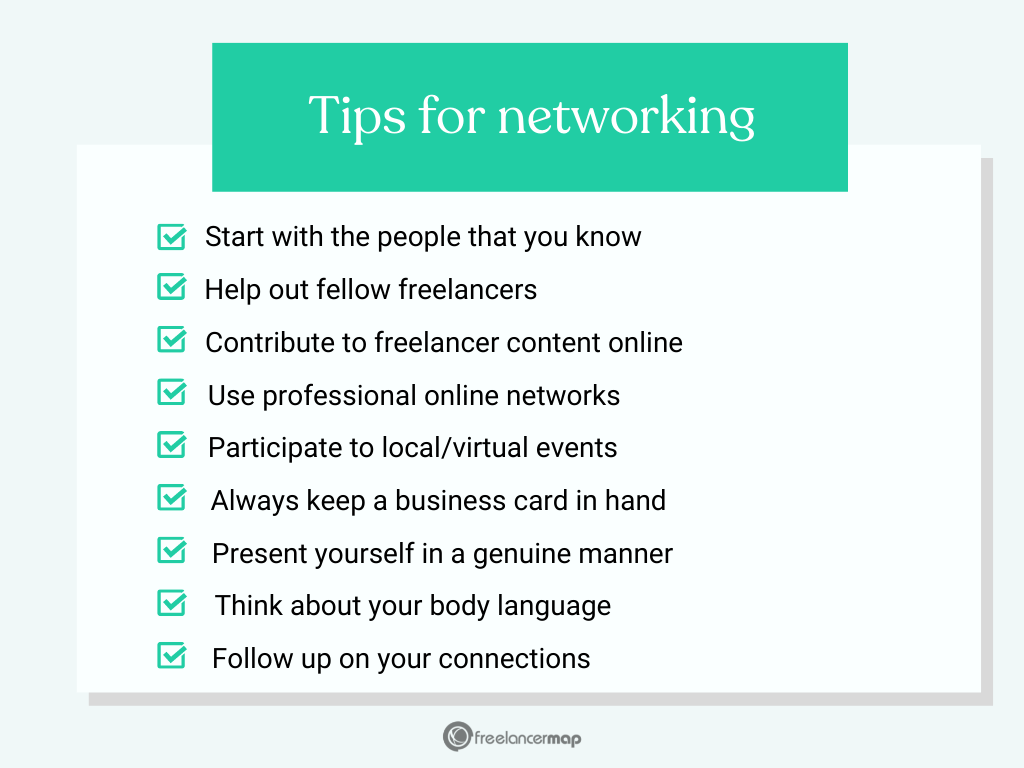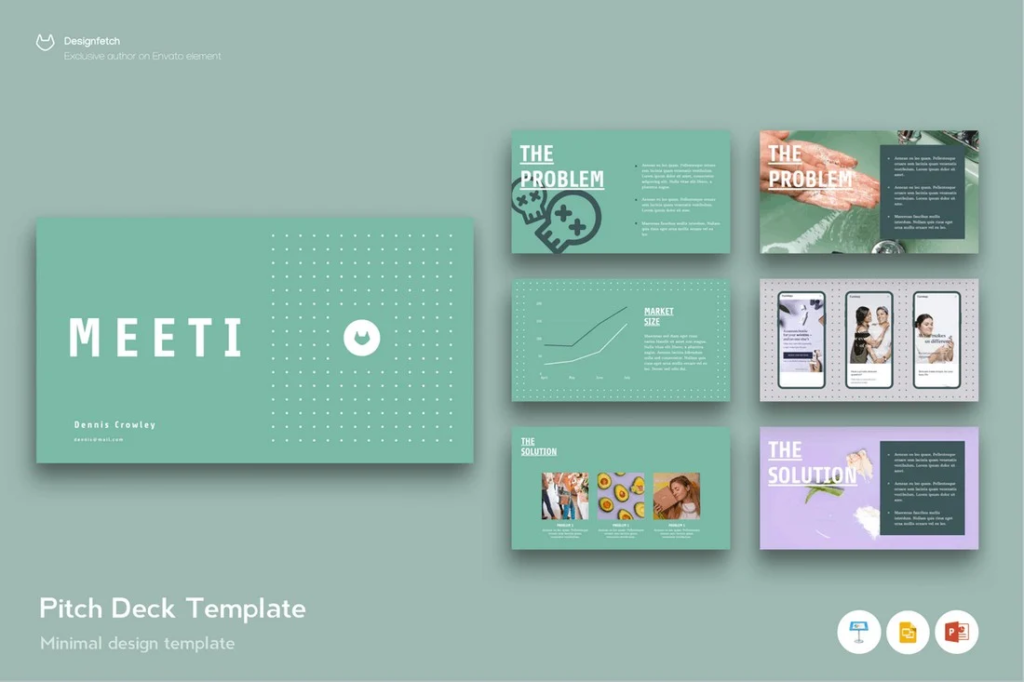How to Start as a Freelance Graphic Designer: 14 Expert Tips

Table of Contents
- What Is the Scope of Graphic Design Today?
- The Need for Freelance Graphic Designers
- 14 Tips on How to Become a Freelance Graphic Designer
- 3 Key Tips to Land Your First Client as a Freelance Graphic Designer
- Key Takeaways
- Conclusion
- FAQs
Becoming a freelance graphic designer may initially seem like a daunting task, and you may have been mulling over how to start as a freelance graphic designer with no experience. While the process involves some effort, it can ultimately be worth it. Freelancing lets you be your boss, which means you can work as you please. Even in terms of salary, there are several options. You may settle for a per-hour rate, work on a specific project, or work on a monthly retainer: whichever suits you best.
Most designers who are freelancers opt to work at their convenience, as they believe they could earn more than what they would earn from a full-time job. However, the catch lies in getting your first client. It’s a vicious circle; you can’t get work without any experience, you can’t find work as a fresher. So, how do you beat this situation? This article is an endeavor to help you by answering the question “How to become a freelance graphic designer?”
What Is the Scope of Graphic Design Today?
The world is moving at a fast pace today, and people’s attention spans are getting shorter by the day. No wonder most businesses spend time and money on creating eye-catching graphics to grab the attention of their target audience. The current situation opens up unlimited opportunities for freelance creative designers.

Graphic designing is nothing short of art. Graphic designers need to articulate ideas and communicate them with great visual appeal. You can find examples of graphic designing in practically all places; on signages, packaging, website pages, social media platforms, etc. Every person’s life is influenced by graphics in one way or the other.
Many businesses have started forming their creative teams in-house, as there is immense demand for graphic designing solutions warranting full-time employees. Besides this, many companies are in a situation where they must outsource work due to time constraints. So, such a situation provides excellent opportunities, as well as the answer to the question, “How to get freelance graphic design work?”

The Need for Freelance Graphic Designers
Besides in-house teams, several creative agencies provide clients with design services and graphic solutions. With the COVID-19 pandemic driving everyone indoors, all design work is happening remotely, and there are no geographical barriers for designers, as they can work with clients located thousands of miles away.
Most small businesses cannot afford to appoint in-house designers and pay them regular monthly salaries. Such companies turn to a freelance graphic designer, who can provide the service as and when they need it. This widens the scope for any freelance graphic designer looking for part-time work. No wonder, then, that graphic designing is a much sought-after profession in India of late. What’s more, freelance graphic designer rates are also pretty attractive. There may be many freelancers who do not wish to work on hourly rates. In such cases, they can quote a flat fee for specific projects.
14 Tips on How to Become a Freelance Graphic Designer
Graphic design is no mean feat, but we’ve got you covered. Mentioned below is an exhaustive list of tips on how to get freelance graphic design work.
1. Lay a strong foundation
All the successful graphic designers of today started as novices some time back. It was sheer grit and determination that led them to gain recognition in their niche. However, as a graphic designer, you must communicate your ideas with excellent visual appeal. Look at the eye-catching visuals shared on social media platforms. If you want to showcase your designs on social media, you have to create the best work. The visuals you create must be impactful and remain etched in the target audiences’ minds.
As an aspirant, you may believe it is sufficient to know how to use fancy fonts and draw a few lines. However, graphic design entails much more than that. You need to learn about layouts, visual structuring, spacing, hierarchy, and much more. Using the right typography is equally important for a graphic designer. A resourceful graphic designer will not only use colors judiciously but will use white spaces brilliantly as well.
2. Consider taking up a course
The good news is that you will never need a formal degree to pursue your interests as a graphic designer. However, you may want to explore the options to do a short-term graphic design course from any reputable institute. Before accepting an offer, please carefully review it. The diploma or degree the institute awards you upon course completion will be an added bonus, boosting your credentials. However, creativity must always come from within.
So, what does a graphic designing course teach you? Firstly, you will learn about the various tools that help solve problems and create designs. As a student, you will have exposure to a wide range of live projects, which give you a holistic view of the various aspects of graphic designing. Typography, illustration, photography, publication design, packaging, corporate identity, and branding, are a few of the many concepts you will learn during the program.
3. Display your work
The best way you can represent yourself is through a well-designed portfolio. That is what a prospective employer would ask for even before getting to meet you. It is worthwhile to spend some time creating an attractive portfolio displaying all your creations. Ideally, you ought to have an impressive portfolio by the end of your graphic design course. You may also get great exposure as an intern, as soon as you finish the course. Once you complete your course, here are some career opportunities you can explore.
- Graphic design
- Web design
- Communication design
- Strategy design
- Brand architecture
- Design research
- Creative art direction
4. Build your network
It is fantastic if you can create impressive designs and get countless likes on social media, but it may not be sufficient to launch your career as a graphic designer. Prospective employers prefer to hire people who have good references and are trustworthy. If you don’t have either, they would rather wait until they find a suitable candidate. Hence, the easiest way to get your first freelance assignment is to build your network.
You may already have a network, but that may not be wide-reaching enough to land you some plum jobs. While undertaking your graphic design course itself, you should start building your network. In this network, you can include your tutors, peers, and the people at the company you are sent to for your internship.
You may have done some volunteer work for an NGO or a charitable organization, which will add to your portfolio. Even the work you do for close friends and family counts as experience and can be displayed in your portfolio. Try participating in design conferences where you can interact with people in your trade.

In other words, any professional you meet during your graphic designing journey is worth adding to your network. Inform all of them that you are available to work freelance and that you are on the lookout for your first gig as a freelance graphic designer. Now is the time to worry about how to become a freelance graphic designer, but not the time to think about freelance graphic designer salaries. As a fresher, you cannot expect high pay at the outset. It takes years of experience, a strong skill-set, and a powerful network to get to a place where you get paid what you demand.
5. Nurture and expand your network
Is it challenging to build and expand your network? Yes and no. If you plan to quit your nine-to-five job and start your career as a freelance graphic designer, you can always fall back on the people you worked with to help you out. If they appreciated your work and liked you at the workplace, they wouldn’t hesitate to lend a helping hand.
It all depends on the contacts you already have, and how you use such connections to expand your network. It doesn’t matter if you don’t know many people in the industry: jot down the names of people you already know and make contact as soon as possible. Making a list of people is the first step, and you can keep eliminating and adding more to fine-tune your contacts list. It makes sense to stay in touch with people you worked with, regardless of how short the period was.
Every single one of them is a potential contact that can get you more contacts. The more people you network with, the larger your network grows. With a wide network, you will have plenty of design work to do, and you will soon have an enviable income too. Remember, the most valuable contacts on your list are your peers and close friends, in addition to big clients in the industry.
It is important to socialize and communicate freely with the people around you. Your strength lies in your network, and you must focus on building a strong one. Try to connect with people in freelance communities and professional portals. Platforms like LinkedIn enable you to meet the cream of recruiters from leading agencies. Connect with people that matter, and tell them what you are capable of doing. Ultimately, it boils down to how many people are willing to onboard you for their design operations. Having a solid connection can pave the way for a brilliant career as a freelance graphic designer.
6. Gear up for the first meeting
Now that you have managed to fix an appointment and are eager to meet your first client, the big question is, how do you convince them to give you your first gig? You must do your homework well in advance to be ready for such a meeting. When you have a strategy for the hustle, you shouldn’t have a problem convincing your prospective client.
No matter how prepared you are, you can feel intimidated when pitching your first project. You could request a pre-meeting call in such scenarios. It will help you break the ice and warm up to the person you are going to meet. It is also an opportunity for the client to get to know you before meeting you, and it helps build mutual rapport before the meeting actually begins.

Remember, there may be many others like you who have either already met the same client, or are scheduled to meet them after your meeting. You should not feel too overwhelmed by such a situation and must have your bearings in place. After all, you have come well-prepared, and have an impressive portfolio to display to your prospective client. Be confident and understand whom you’re pitching to; it will make all the difference.
7. Convince the client you’re the right person for the job
Most clients are not sure how good or bad a freelancer is, and whether the outcome will be to their satisfaction. They often hesitate to experiment with a new graphic designer, as they are concerned about the design quality of an inexperienced person. It is crucial to convince them you are the right person, which you can do by preparing a project outline that meets their expectations.
In order to build trust, you can talk about the number of revisions you are willing to do with no additional cost. However, never deviate from the cost you have agreed upon already. It is okay if your first freelance graphic designer salary is not what you expected; at least you are getting your first break.
8. Don’t be too choosy
It makes no sense to be picky about your assignments when you are a newbie freelance graphic designer. The important thing is to land your first freelance design project. Hence, however uninteresting the project may seem, take it and execute it with all sincerity. After a couple of projects, you are sure to land a project of your liking, and the going will be smooth henceforth. The trick lies in being open to projects you are not too familiar with and taking them up as a challenge.
9. Keep your social profiles updated
You have to build your case with impressive work samples and a go-getter attitude that most business owners appreciate. It pays to research the company before you go for your first meeting because there is nothing quite like-sounding confident and getting facts about your client right. That’s how you can prepare yourself to answer any questions your interviewer asks.
Look up the company’s close competitors, and see what sort of designs they have on their website. Spending time to get to know the target audience of the company you plan to work with as a freelance graphic designer is a good practice, as such foresight will impress the client.
10. Specialize according to your skills
Graphic designing is not just about putting some elements of design together. You need to specialize based on your skills. For instance, if you know about grid theory, typography, and color theory, you should be showcasing these fields as your fortes.
Besides these fundamental skills, you have a whole range of options, including short-term courses that teach you the tricks of the trade. Additionally, you may want to read some graphic design books, such as Designing Brand Identity by Alina Wheeler, where you can pick up some points that are relevant to today’s audiences.

11. Work on your soft skills
To deal effectively with clients or managers, you must first develop your communication skills. Honing your communication skills helps you put your point across effectively in all situations.
Similarly, being an active listener is crucial, as it helps you visualize what your client is trying to convey, and makes it easier to translate that idea into a stunning piece of design. Time management is also a soft skill you must develop, as it helps you manage multiple projects simultaneously. It is only practicing that can make you perfect.
12. Master the art of explaining design to laypeople
A person without a design background may not know about the nuances involved in creating a design. You need to explain why their brand needs a design solution, and how you are going to create it. It helps you present your ideas better. You could also explain why you audited competitors, the various customer insights you took into account, the mood boards you put together, the many sketches you tried, and the aesthetic references you looked up before you came up with a final design.
13. Market your skills
If you want to know how to start as a freelance graphic designer in today’s oversaturated market, you should start by learning how to market your skills. It is pretty challenging to stand out in the crowd and be noticed by plum clients. To make things easier, first, identify your unique selling proposition (USP) to let the client understand what is on offer.
You can even start a design blog as a way to market your skills. Make sure you keep updating it with the latest trends in the design field. Other than this, networking online is an excellent option, as contacts are the lifeline of a freelance graphic designer’s career. You could make yourself more visible on Twitter, the perfect place to connect with clients in the design world. Social media platforms, in general, are the best place to market your skills.
14. Proofread your designs
Proofreading is not limited to text. Visual proofreading is crucial, as it helps you spot tiny errors that are not easily noticeable to the blind eye. It is something like detecting typos in a script. Proofreading is an important function in the design process that helps you maintain a high level of quality, leading to stunning, flawless designs your clients will simply love.
3 Key Tips to Land Your First Client as a Freelance Graphic Designer
The good news is that there is a lot of graphic design work for the taking. Today, a lot of small businesses (along with established brands) need website design, logos, and other graphic design work. However, as an inexperienced designer, it may be daunting to land your first client. Here are some handy tips.
1. Build a detailed profile
As a freelance graphic designer, it is of utmost importance to create a detailed profile that showcases your work samples. In the case of digital portfolios, it is typically a link. Make your profile as holistic as possible, in which you may want to share your experiences during your training stint, details of your education, your resume, any relevant academic projects you took up, and more. It is alright if you don’t have any industry experience: it is your attitude and enthusiasm to take up the first project that matters more.
2. Give a personal touch to your pitch
Pitching is important, and adding a personal touch is even more crucial. No employer likes generic job applications that look like a form filled out in a hurry. Preparing a few pitch templates instead will allow you to include as many target industries as possible. We’ve attached a creative pitch deck template below for some inspiration.

Make sure all the essential project details are in place before you submit your pitch. The pitch must be relevant to the industry in which your prospective client is involved. It is always better to tailor it specifically to the project instead of giving something generic.
3. Be ready for an assessment
Be open to taking a skills test to prove your capabilities. After all, you need to establish your competency for the job. You may want to take a few mock tests to brush up on your skills and be better prepared for your first meeting with a client. Most clients would like you to appear for a skill test in order to get an idea about how you approach a problem and solve it. They also would like to know whether you communicate well and can perform under pressure.
Key Takeaways
- Freelance graphic design opportunities are aplenty, and you must go well-prepared for a meeting with your prospective client for your first project.
- Besides having a detailed profile with links to your portfolio, it is essential to hone your soft skills before setting out to meet your prospective client.
- It is not impossible for a fresher to land their first design project, provided the approach is correct.
- Once you have your foot in the door, you can expect your income to rise steadily.
- There are no geographical barriers for designers, as they can work with clients located thousands of miles away.
- Proofreading is not limited to text. Visual proofreading is equally crucial.
Conclusion
Getting your very first project as a freelance graphic designer can be pretty daunting. It takes time, effort, and a never-give-up attitude to land your first gig. However, it is crucial to do it right the first time. People prefer to hire someone who is proactive, has a go-getter attitude, and problem-solving abilities, and never backs down from a challenge. We hope these tips on how to start as a freelance graphic designer will help you become successful in the field.
FAQs
Many out-of-work designers are pondering over the question “How to start as a freelance graphic designer?” It’s not too difficult.
1. To start with, you need to build and update your portfolio. Next, visit a few design websites for inspiration and create your social media profiles.
2. You may also want to visit freelance job marketplaces and register.
3. If you are good at writing, you can even create a design blog.
4. You must also learn to become a good hustler. Networking and marketing your presence by word-of-mouth also works.
If you don’t have the requisite skills, you must first get qualified at a design school. Self-teaching is another option you can explore. Creating stunning designs helps you build your portfolio and brand. You can try reaching out to potential clients by calling or emailing them. You must maintain your freelance career by executing jobs promptly and networking regularly.
Getting freelance design work is a process that takes time. In order to avoid miscommunication or misunderstanding, you must be patient. You may want to create a contract template that will help you sign agreements quickly. There’s no point in getting tensed up due to lack of work, as it will pour in if you keep trying. You can find design jobs on freelance job portals like Upwork and Designhill.
Fixing your freelance rate can be a daunting task. You may be stumped when a client asks for your freelance graphic design rate, as you may not have calculated it yet. It is easy to work out your rate if you calculate the time it takes to complete a task or project. Most freelancers charge by the hour; however, some prefer to quote on a per-project basis. If you decide on the latter, you can work at your own pace, without having to track time or submit a timesheet.
According to research conducted by Payscale, the average hourly rate for graphic design work is Rs. 296.61, but it ranges from Rs. 81 to Rs. 979 per hour.
Latest Blogs
Explore how Google’s 2025 AI search updates triggered ranking chaos. Learn actionable strategies to adapt your SEO for AI Overviews, zero-click searches, and SERP volatility. Stay ahead now.
Learn how to rank on AI search engines like ChatGPT, Perplexity, and Gemini by optimizing your content for authority, structure, and relevance. Stay ahead in AI-driven search with this strategic guide.
Explore the best healthcare SEO services for your medical practice. Improve online visibility and effectively reach more patients in need of your services.
Get your hands on the latest news!
Similar Posts

Design
7 mins read
15 Best Firms Offering Design Services in India

Design
5 mins read
All You Need to Know About Data-Driven Design

Design
6 mins read